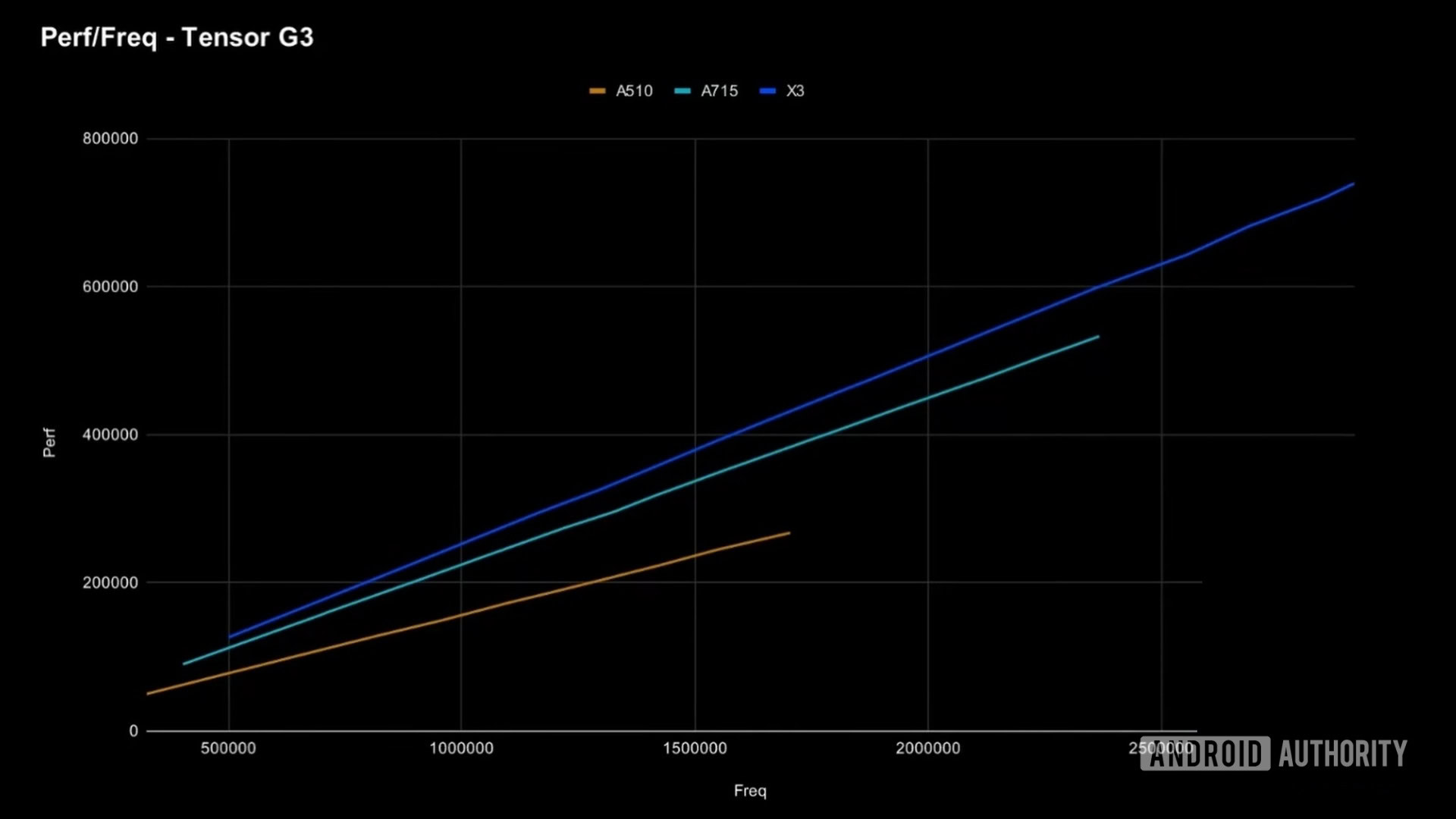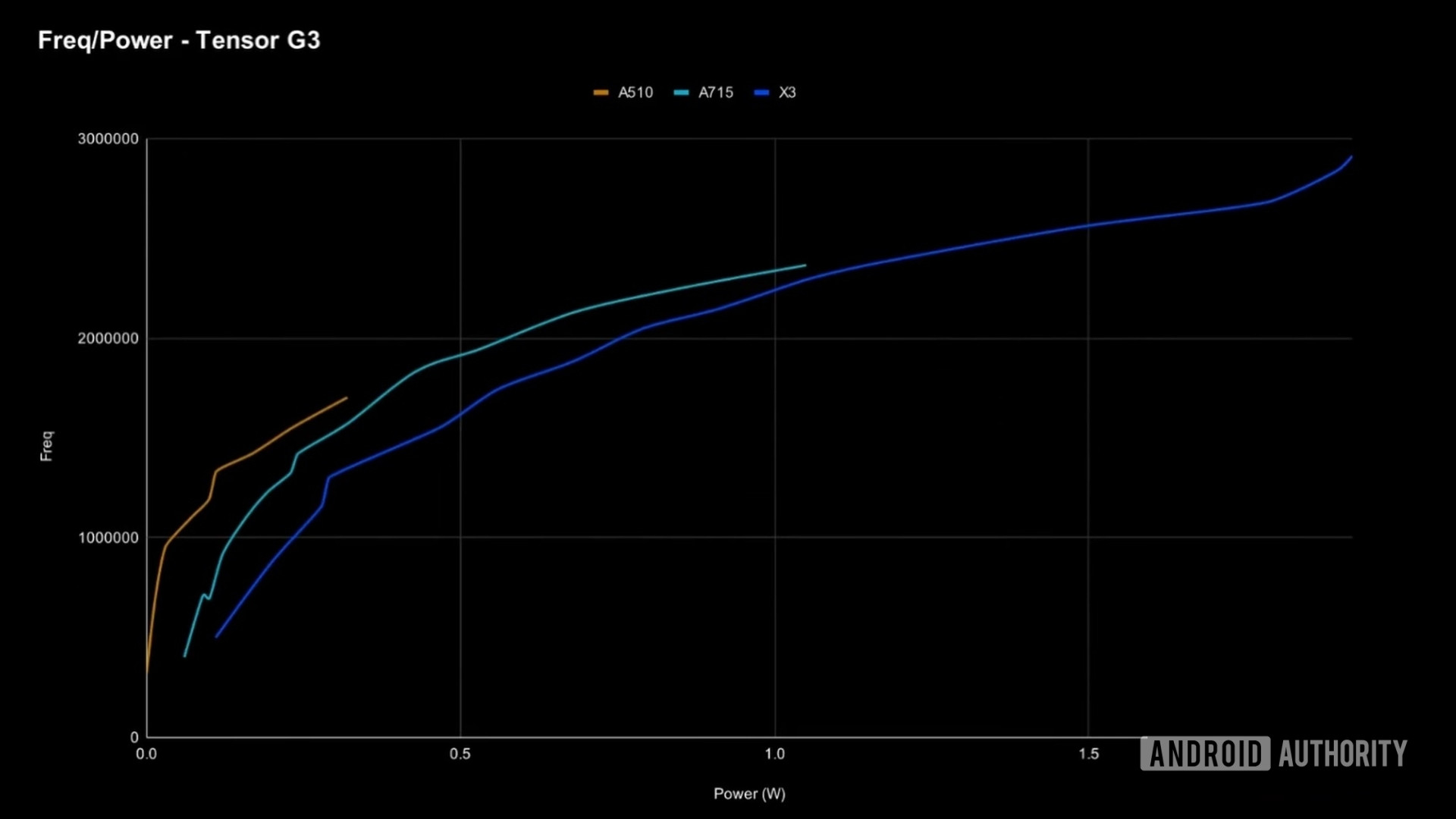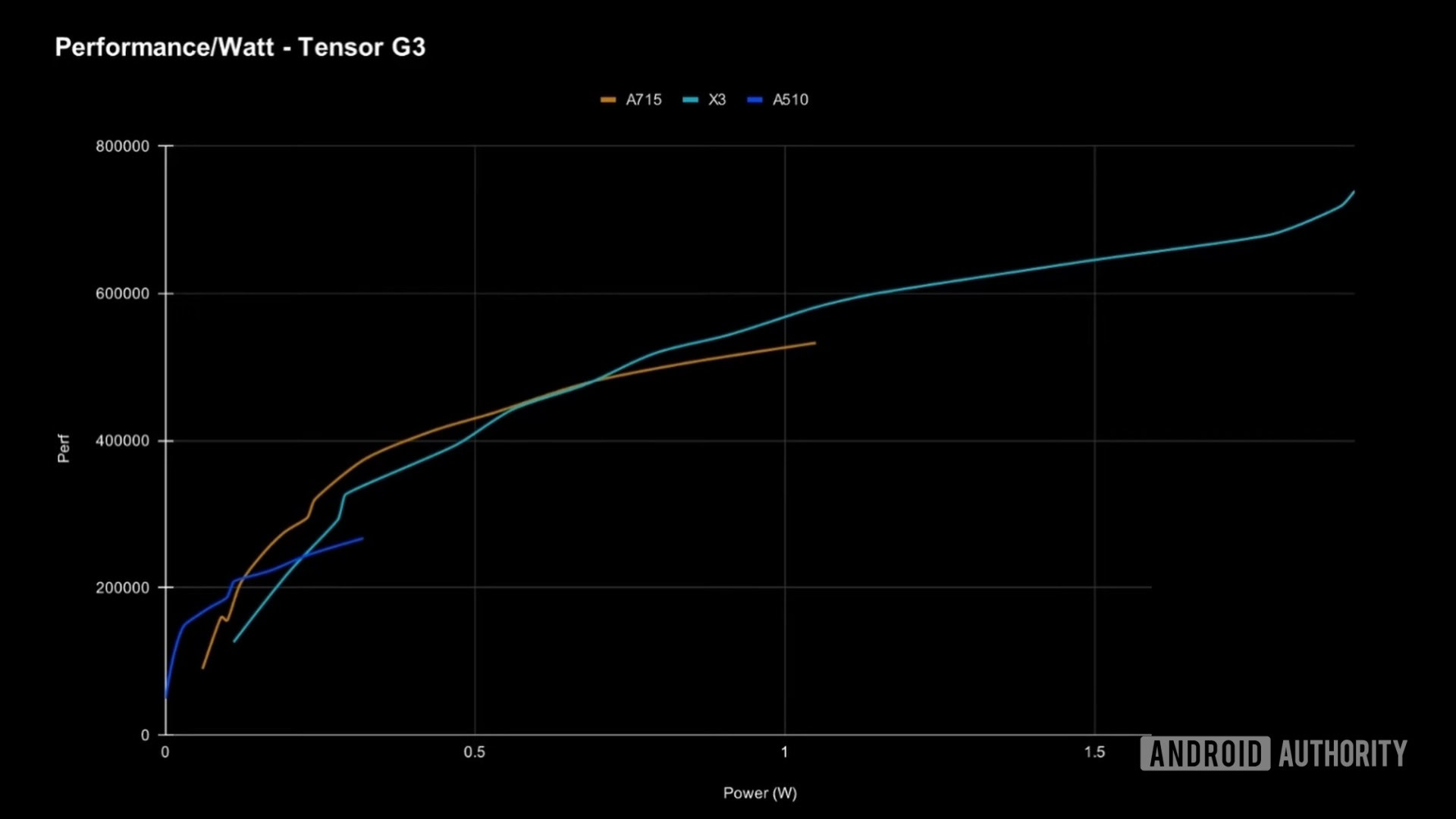Affiliate links on Android Authority may earn us a commission. Learn more.
Tensor G3 performance per watt: How efficient is Google's top chipset?
April 9, 2024
The maximum peak performance of a CPU is a critical metric to consider when comparing different CPU designs. However, it’s not the only number that matters. Other important metrics include sustained performance and performance per watt. In this article, I delve into the performance per watt of the Google Tensor G3 system on a chip (SoC) that’s currently used in Pixel 8 phones and will likely be used in future Google phones as well.
What is the Google Tensor G3?

The Google Tensor G3 is an SoC designed for mobile devices, specifically Pixel devices. It’s manufactured by Samsung, likely in collaboration with Google, and shares many similarities with other Samsung chips. The CPU consists of nine Arm cores: one Cortex-X3 clocked to a maximum of 2.91GHz, four Cortex-A715 clocked to a maximum of 2.37GHz, and four Cortex-A510 clocked to a maximum of 1.7GHz. The SoC also includes an Arm Mali-G78 GPU and is built on Samsung’s 4nm process.
The Google Tensor G3: Performance per watt results
To measure performance per watt, I used a rooted Pixel 8 device. This allowed me to control which CPU core my benchmarks are running on. I can control the maximum CPU frequency, so I can see the performance at each frequency step. I’m also allowed to set the governor. In this case, I set it to performance. I then measured the amount of energy used by the smartphone, allowing me to calculate the performance per watt.
Watch the video above for a full description of my findings. Below is a brief summary of my Tensor G3 performance per watt results.

The first graph plots performance against frequency. As you increase the clock frequency, you increase performance, but the gradient of the lines for each CPU core is different. The A715 and the X3 are close, but the A510 is significantly different, showing a large performance gap between them. However, the A510 uses less power, so it’s used as the power efficiency core rather than the high-performance core.

The next graph visualizes the relationship between frequency and power usage and demonstrates the A510’s efficiency at low frequencies. It uses significantly less than the two faster cores, clearly demonstrated at the 1.0GHz mark. Nevertheless, this test demonstrates that increasing the clock speed will result in more power usage, but there are diminishing returns up to a certain point.

The last graph pits power against performance and demonstrates where each core is most efficient. The A510 performs well using very little power up to a certain point. After that point, the A715 provides greater performance for the same amount of power while running at a lower frequency. The A715 starts to plateau at higher frequencies, and this is where the X3 justifies its inclusion. It can extract the same amount of performance while running at a lower frequency than the A715, providing better efficiency in the higher-performance band.
In conclusion, the Google Tensor G3 system on a chip offers better power performance than previous generations. I hope this positive trend continues as we progress with different microarchitectures and process nodes.
Thank you for being part of our community. Read our Comment Policy before posting.